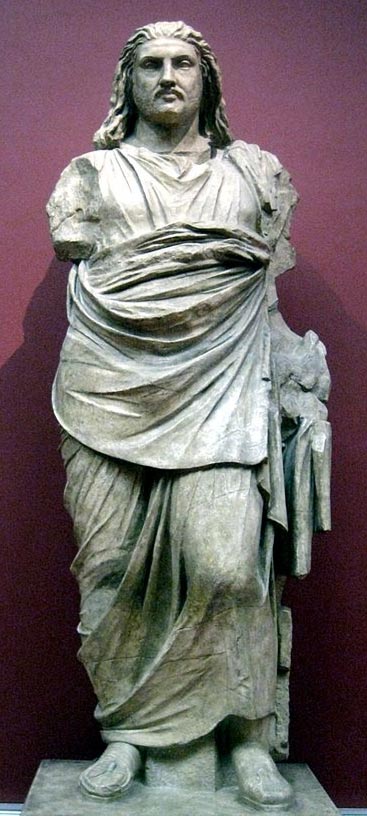Settlement
Halicarnassus
Halicarnassus an ancient Greek city of Caria, situated on the Gulf of Cerameicus. Herodotus, a Halicarnassian, relates that in early times the city participated in the Dorian festival of Apollo at Triopion, but its literature and culture appear thoroughly Ionic. The city, with its large sheltered harbour and key position on the sea routes, became the capital of the small despotate, the most famous ruler of which was a woman, Artemisia, who served under Xerxes in the invasion of Greece in 480 bc. Under Mausolus, when it was the capital of Caria (c. 370 bc), it received a great wall circuit, public buildings, and a secret dockyard and canal, while its population was swollen by the enforced transference of the neighbouring Lelegians. On the death of Mausolus in 353/352, a monumental tomb, the Mausoleum, considered one of the Seven Wonders of the World, was built by his widow in the city.
The Mausoleum of Halicarnassus was built for Mausolus, the second ruler of Caria from the Hecatomnid dynasty (and nominally a Persian satrap) who died in 353 BC. As the man who refounded Halicarnassus, Mausolus was entitled to receive cultic honours and a tomb on the central square of his city, in accordance with Greek custom. The person in charge of this project was Mausolus’ grieving widow, Artemisia II, who, incidentally, was also his sister.
By the end of the Peloponnesian War (in any case after 412), Halicarnassus had lost its independence and was part of the Persian Empire again. It belonged to the satrapy of Caria, which was ruled by a local dynast called Hecatomnus of Mylasa
The site, extensively excavated in 1856–57 and 1865, retains much of its great wall, remnants of the gymnasium, a late colonnade, a temple platform, and rock-cut tombs. The ancient remains are somewhat overshadowed by the spectacular pile of the castle of the Knights of St. John, founded about ad 1400.




No comments:
Post a Comment